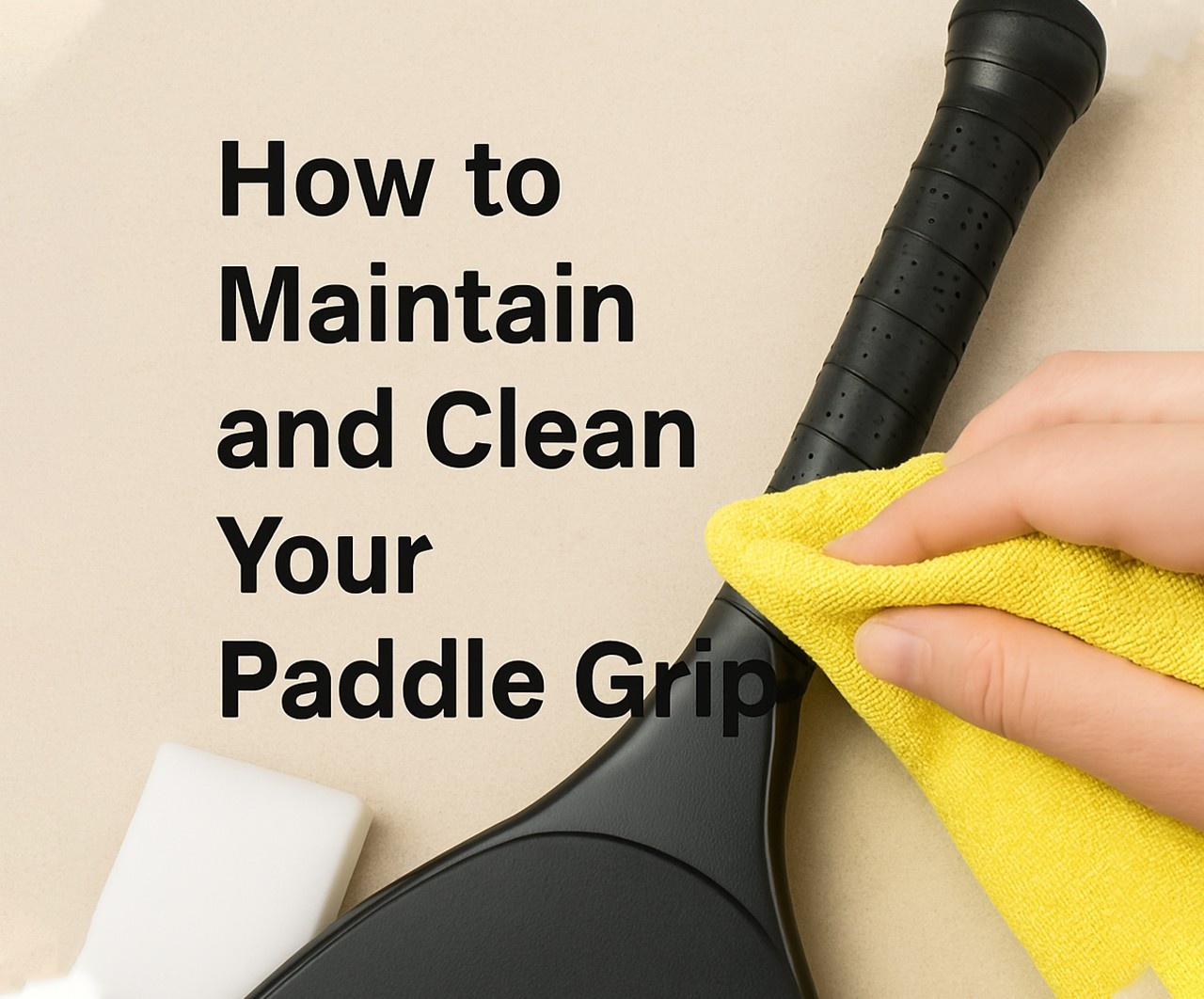Taking care of your paddle grip is essential for maintaining peak performance in pickleball. A well-maintained pickleball paddle grip ensures a strong hold, prevents slippage, and enhances your control on the court. Whether you use the best pickleball paddle grip or regularly change to a pickleball paddle replacement grip, cleaning and proper upkeep can extend its lifespan and improve your overall game. Neglecting your grip can lead to wear and tear, reducing effectiveness and making gameplay uncomfortable. Know more..
Why Paddle Grip Maintenance Matters
Your pickleball paddle grip absorbs sweat, dirt, and oils from your hands during play. Over time, this buildup can make the grip slippery, affecting your control. Regular maintenance ensures that the texture remains intact, allowing for better handling and minimizing the risk of injury due to slippage.
A poorly maintained grip can also lead to discomfort, blisters, and fatigue. Players who use a slippery or worn-out grip may unknowingly adjust their grip strength, leading to unnecessary strain on their wrist and forearm. This can negatively impact their playing performance and even lead to long-term issues like tennis elbow.
Signs Your Paddle Grip Needs Cleaning
If you’re unsure whether your best pickleball paddle grip needs maintenance, look for these signs:
- A slippery feel when holding the paddle
- Visible dirt, discoloration, or fading
- Unpleasant odors from accumulated sweat
- A rough or sticky texture
- Loss of tackiness, making it harder to maintain a firm hold
If you notice any of these signs, it’s time to clean or replace your grip to ensure optimal performance and comfort.
How to Clean Your Pickleball Paddle Grip
1. Daily Maintenance: Wipe After Use
After every game, wipe down your pickleball paddle grip with a dry microfiber cloth to remove surface sweat and dirt. This quick step helps prevent buildup and prolongs the grip’s lifespan.
For players who sweat a lot, using a damp cloth occasionally to wipe down the grip can help remove excess oils and dirt before they accumulate.
2. Deep Cleaning Method
For a more thorough clean, follow these steps:
- Mix warm water with a small amount of mild soap.
- Dampen a soft cloth or sponge in the solution.
- Gently scrub the pickleball paddle grip, focusing on high-contact areas.
- Wipe with a clean, damp cloth to remove soap residue.
- Let the grip air dry completely before using it again.
3. Avoid Harsh Chemicals
Strong cleaners can break down the material of your pickleball paddle replacement grip, making it wear out faster. Always use mild soap and water instead.
4. Use Grip Enhancing Products
Some players use grip enhancers, such as rosin bags or grip sprays, to maintain tackiness. If you choose to use these products, be sure to clean your grip regularly to prevent residue buildup.
When to Replace Your Paddle Grip
Even with regular cleaning, all grips wear out eventually. Knowing when to replace your pickleball paddle grip is crucial for maintaining control and comfort. Here are key indicators that it’s time for a pickleball paddle replacement grip:
- The grip feels slick and no longer provides traction.
- There are visible cracks, peeling, or fraying.
- It has become too hard or stiff, making it uncomfortable.
- You experience wrist or hand fatigue due to reduced cushioning.
- The grip has lost its original shape and no longer fits comfortably in your hand.
If you play frequently, consider changing your grip every 1-3 months, depending on wear.
How to Replace Your Pickleball Paddle Grip
1. Remove the Old Grip
Carefully peel off the existing grip without damaging the paddle handle. If there is any adhesive residue left on the handle, clean it with rubbing alcohol and let it dry completely before applying the new grip.
2. Clean the Handle
Wipe down the handle to remove any residue before applying the new grip. This ensures that the new grip sticks properly and lasts longer.
3. Apply the New Grip
- Start at the base of the handle and secure the end of the grip with a small piece of tape.
- Wrap the new best pickleball paddle grip tightly around the handle, overlapping each layer slightly.
- Make sure the wrapping is even and smooth to prevent bumps or wrinkles.
- Once fully wrapped, use the finishing tape provided to secure the top of the grip.
4. Test the Grip
Before playing, hold the paddle and take a few practice swings to ensure the grip feels comfortable and secure.
Prolonging the Life of Your Grip
- Use an Overgrip: Adding an overgrip to your paddle can help absorb sweat and extend the life of your primary pickleball paddle grip. Overgrips are easy to replace and cost-effective.
- Store Your Paddle Properly: Keep it in a dry, cool place to prevent excessive wear from moisture. Avoid leaving your paddle in a hot car, as extreme temperatures can damage the grip material.
- Rotate Between Grips: If you play frequently, having multiple grips and rotating them can extend their usability. Switching out grips before they become completely worn prevents slippage and maintains consistency in your gameplay.
- Keep Your Hands Dry: If you tend to sweat a lot, use a wristband or a towel to keep your hands dry during matches. This reduces the amount of sweat absorbed by your grip.
Additional Tips for Keeping Your Grip in Top Condition
- Avoid Over-Tightening Your Grip During Play: A relaxed grip prevents premature wear and reduces hand fatigue.
- Choose the Right Grip for Your Playing Style: Some grips are designed for moisture absorption, while others focus on tackiness. Pick a grip that complements your playing conditions and preferences.
- Inspect Your Grip Regularly: Check your grip before and after games to catch early signs of wear and tear.
Final Thoughts
Maintaining and cleaning your pickleball paddle grip is essential for ensuring top performance and durability. A well-maintained grip enhances control, prevents slippage, and provides comfort during play. Using the best pickleball paddle grip and replacing it with a pickleball paddle replacement grip when needed will improve your overall experience on the court. Implementing a regular cleaning routine, using proper storage techniques, and replacing your grip when necessary will help keep your paddle in the best condition for every game. By taking good care of your grip, you can focus on improving your skills and enjoying the game with confidence.

